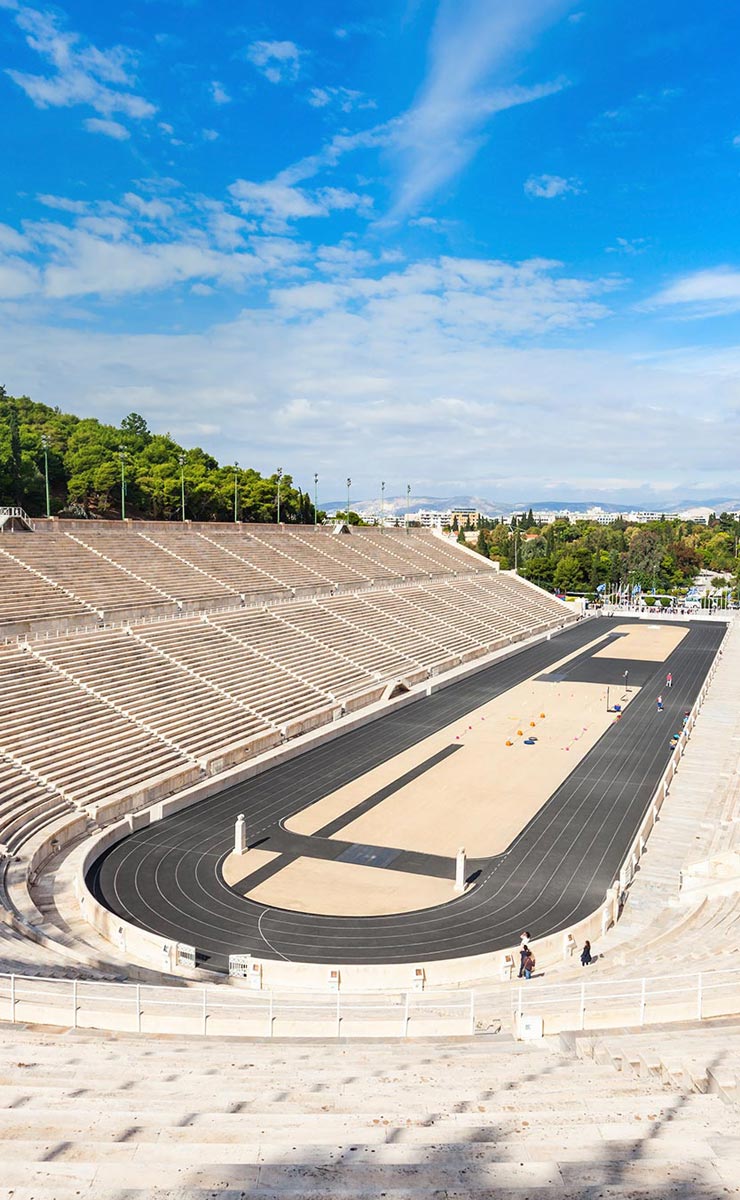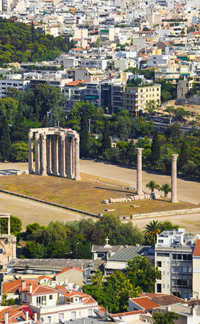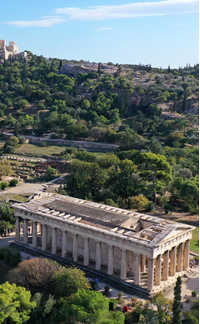The Panathenaic Stadium, also known as Kallimarmaro (meaning “beautifully marbled”), is one of Athens’ most iconic landmarks — a rare ancient stadium made entirely of white Pentelic marble. It stands on the site of an earlier stadium built in the 4th century BC to host the Panathenaic Games, a major religious and athletic festival in honor of Athena, the city's patron goddess.
A Unique Ancient Monument
Originally constructed around 330 BC and expanded by Herodes Atticus in the 2nd century AD, the stadium could once seat over 50,000 spectators. It was used for footraces, athletic contests, and cultural celebrations tied to Athenian civic pride.
After centuries of decline and abandonment, the stadium was fully excavated and restored in the late 19th century — an ambitious project fueled by Greek national pride and support from philanthropist Georgios Averoff. It went on to host the first modern Olympic Games in 1896, becoming a symbol of the Olympic revival and Greece’s deep connection to ancient traditions.
A Living Piece of History
Today, the Panathenaic Stadium remains a venue for ceremonial events and is open to visitors year-round. It has also hosted events in more recent Olympic Games (2004), and it plays a key role in the Olympic torch relay, where the flame is passed on before each modern Games.
Visitor Highlights
- Walk or jog along the original track where ancient athletes once competed.
- Climb to the top tier for panoramic views of Athens and the Acropolis.
- Visit the on-site exhibition showcasing Olympic history and memorabilia.
More than just a relic, the Panathenaic Stadium is a bridge between the ancient and modern worlds — a place where visitors can feel the echoes of past victories and the enduring spirit of global unity.


















